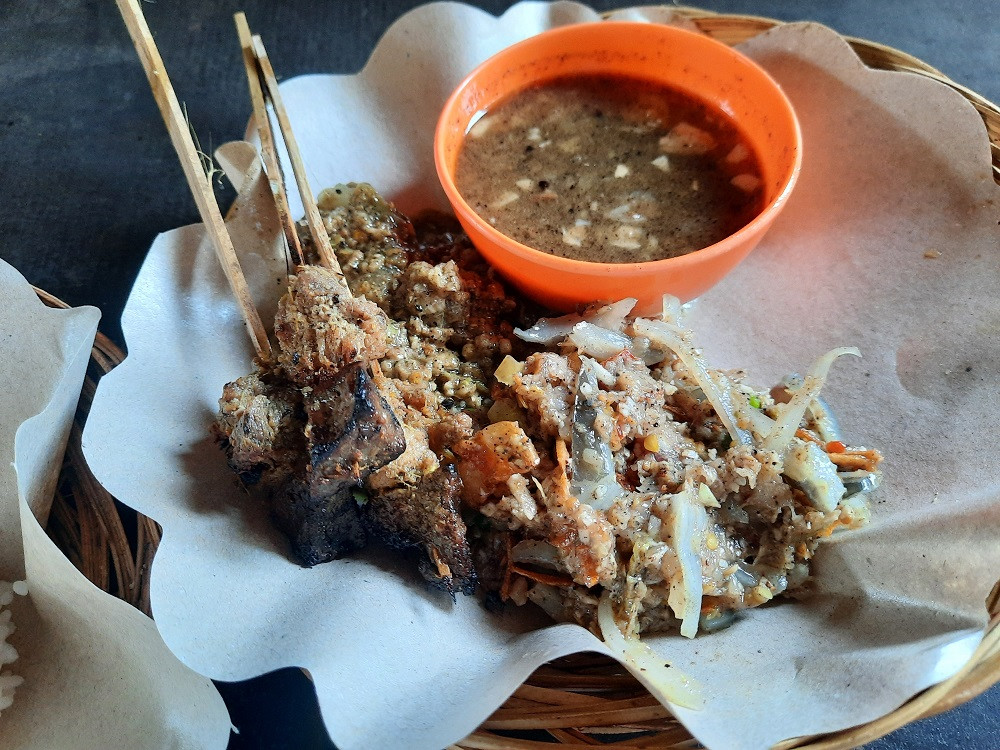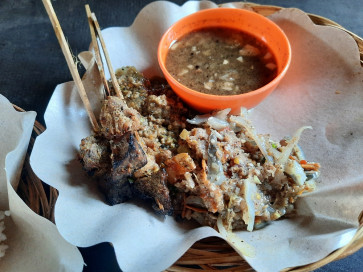Popular Reads
Top Results
Can't find what you're looking for?
View all search resultsPopular Reads
Top Results
Can't find what you're looking for?
View all search resultsThe controversial delicacy taking Bali by storm
Change text size
Gift Premium Articles
to Anyone
A
small warung (stall) serving lawar empas (freshwater softshell turtle) is gaining popularity in Bali. But troubling questions linger about the dish’s inspiration and provenance.
There’s nothing unusual about the scenes that greet you when you step into Adi Dongker’s warung (stall). Located near an art market in the sleepy hamlet of Sukawati – 30 minutes from the Denpasar city center – the eatery is typically thronged with excited foodies.
With his imposing knife and extensive spice rack, Adi’s warung has slowly gained acclaim among connoisseurs of one of Bali’s most beloved dishes: lawar.
A catch-all term for coarsely chopped spices, condiments, and meats thickened with either coconut milk or spiced blood, lawar is enhanced with a protein – often pork or duck.
It may not have the global clout of rendang (Padang spice-braised meat), nasi goreng (fried rice) or the fame of Balinese babi guling (spit-roasted suckling pig), but for the islanders, lawar is a way of life. Literally.
Its presence at traditional ceremonies, weddings and religious rituals is unnegotiable. Village elders and religious leaders alike request different lawar for different rituals and occasions, and making it is a village affair. At its best, lawar is a celebration of each Balinese region’s unique terroir, culture and wisdom.
Over at Adi Dongker’s place, though, a new type of lawar has gained popularity, while harkening back to a controversial past.



















